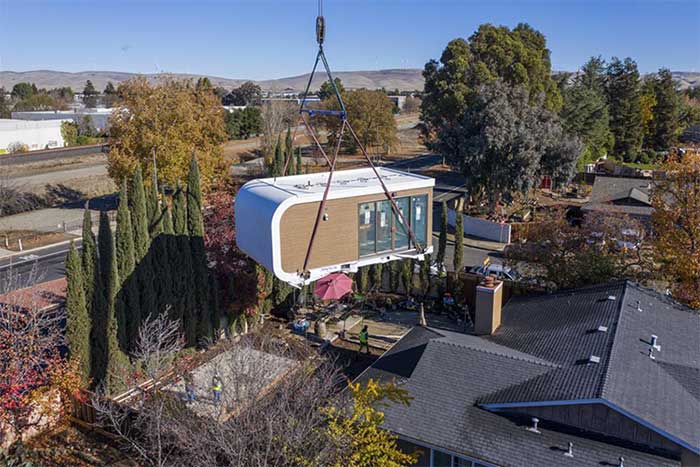Recently, a housing complex featuring 3D-printed homes in Texas, USA, unveiled its first completed model home, with plans to welcome residents starting in September.
This complex is part of a larger real estate development in Georgetown, Texas, known as Wolf Ranch, located approximately 48 kilometers north of the state capital, Austin. The project is a collaboration between ICON, a construction company, and several partners.
A spokesperson for ICON stated that the completed model home is open for tours, and several housing units have already been sold to customers.

A 3D-printed house during transport in Livermore, California. (Image credit: AP).
This complex consists of 100 single-story homes constructed using 3D printing materials. The walls are made from a Lavacrete concrete mixture that is poured on-site using large automated 3D printers. Once the walls are completed, the main doors, windows, and roofs (equipped with solar panels) are also installed.
ICON reports that it has printed one-third of the necessary walls to build the 100 homes. Each house is priced between $475,000 and $599,000, with sizes ranging from over 139 square meters to 195 square meters, featuring 3 to 4 bedrooms.
This housing project was announced by ICON in 2021, with CEO Jason Ballard describing it as a “historic moment in residential housing development.” The 3D printing technology allows for the creation of high-quality homes in a shorter time frame and at a more affordable cost compared to traditional construction methods.
With the U.S. facing a potential shortage of about 5 million new homes to meet demand, this CEO believes that accelerating construction without compromising quality is increasingly urgent. The 3D printing technology employed by the company is essential to meet this demand.
Meanwhile, Martin Voelkle, a representative of ICON’s project partner, emphasized that buildings constructed using 3D technology are a significant step towards reducing construction waste while enhancing sustainability and energy efficiency of the structures.
Independent research indicates that homes built with 3D printing technology can reduce CO2 emissions and construction waste. 3D printing machines can construct buildings without the need for formwork, thereby minimizing material usage. Cement is responsible for approximately 8% of annual CO2 emissions.
Another study conducted in 2020 in Singapore showed that bathrooms constructed with 3D printing technology could reduce costs by 25.4% and decrease CO2 emissions by 85% compared to traditional building methods. However, there are concerns that homes built with 3D printing technology still rely on concrete, a material that emits significant amounts of CO2, and that there are no regulations regarding the safety and stability of structures built with this technology.
Wolf Ranch is the largest project that ICON has undertaken to date. Previously, the company used 3D printing technology to construct social housing in Texas and in Mexico.


















































